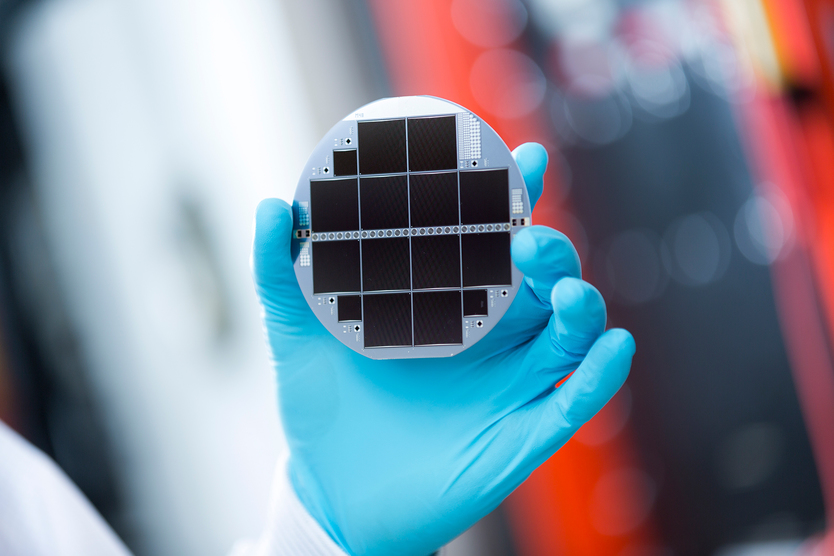
The layers of perovskite within the solar stack convert light very efficiently from the visible solar spectrum into electricity.
Perovskite is being hailed as the ‘new material of photovoltaic research’ – in just six years the
efficiency of solar cells made using the organic-inorganic material has quintupled. Many of
the breakthroughs have been happening at the Helmholtz-Zentrum Berlin (HZB) within the
junior research group ‘Perovskite Tandem Solar Cells’, which is funded by the Federal
Ministry of Education and Research (BMBF).
Importantly, the cells can be inexpensively produced (by combining lead iodide solution with
methylammonium iodide) and ‘printed’ across large surface areas. The layers of perovskite
within the solar stack convert light very efficiently from the visible solar spectrum into
electricity. When twinned with silicon layers (which capture red, near-infrared and long wave
light), the full range of the spectrum can be converted into energy.
The complicated part is the construction of the so-called ‘monolithic tandem solar cell’. Both
sub-cells must be precisely aligned and adjusted in the electrical photocurrent. The chemical
composition must be fine-tuned to achieve the correct thickness of the layers, for example,
and the layers have different physical properties. To reduce reflection losses, micro- or
nanoscopically textured surfaces are used to capture the light.
The first perovskite research project ‘PersiST’, which was funded by the BMWi until autumn
2019, focused on the tandem cell design. The next research project, P3T, which launched late
last year, will focus on the perovskite top cell. Numerous 3D simulations must be carried out
to understand and optimise light capture, but it is thought that the efficiency of the tandem
cell could exceed 30 percent.
More salient than maximum efficiency, perhaps, is integration into existing technologies.
Silicon technology accounts for 90 percent of the market, which means that the perovskite
cells must be adapted to the PERC silicon cells currently used in industrial production.


